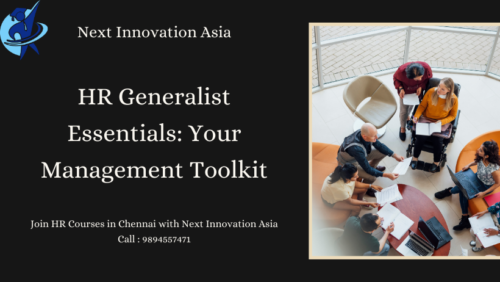Introduction
An HR Generalist plays a crucial role in managing an organization’s human resources effectively. This toolkit provides essential tools and techniques that HR Generalists can use to navigate various HR functions, ensuring smooth operations and fostering a positive workplace culture.
1. Recruitment and Selection Tools
- Job Descriptions: Create clear and concise job descriptions to attract suitable candidates.
- Applicant Tracking Systems (ATS): Utilize ATS to streamline the recruitment process, track applications, and manage candidate data.
- Interview Guides: Develop structured interview guides to ensure consistency and fairness during the selection process.
2. Onboarding and Orientation Resources
- Onboarding Checklists: Implement checklists to ensure all steps are completed during the onboarding process, from paperwork to training.
- Orientation Programs: Design engaging orientation programs that introduce new hires to company culture, policies, and procedures.
- Mentorship Programs: Pair new employees with experienced mentors to facilitate smooth transitions and enhance employee engagement.
3. Performance Management Tools
- Goal Setting Frameworks: Use SMART (Specific, Measurable, Achievable, Relevant, Time-bound) goals to help employees set clear objectives.
- Performance Appraisal Systems: Implement regular performance reviews to assess employee performance and provide constructive feedback.
- Feedback Mechanisms: Establish channels for continuous feedback to encourage open communication and support employee growth.
4. Employee Relations Strategies
- Conflict Resolution Techniques: Employ mediation techniques to resolve conflicts amicably and maintain a positive work environment.
- Employee Engagement Surveys: Conduct surveys to gauge employee satisfaction and gather insights for improvement.
- Recognition Programs: Develop programs to recognize and reward employee achievements, boosting morale and motivation.
5. Compensation and Benefits Administration
- Salary Benchmarking: Research industry standards to ensure competitive salary structures.
- Benefits Enrollment Tools: Use online platforms to simplify benefits enrollment and management for employees.
- Compensation Analysis: Regularly review and analyze compensation practices to maintain fairness and compliance.
6. Training and Development Resources
- Training Needs Assessments: Identify skill gaps within the organization and tailor training programs accordingly.
- Learning Management Systems (LMS): Utilize LMS to deliver, track, and manage employee training and development.
- Career Development Plans: Work with employees to create personalized career development plans, fostering growth and retention.
7. Compliance and Policy Development
- HR Policy Manual: Develop a comprehensive HR policy manual that outlines company policies and procedures.
- Compliance Checklists: Create checklists to ensure adherence to labor laws and regulations, minimizing legal risks.
- Training on Compliance: Provide regular training sessions to keep employees informed about compliance-related issues.
Conclusion
The HR Generalist Essentials Toolkit is designed to equip HR professionals with the necessary tools and techniques for effective management. By utilizing these resources, HR Generalists can streamline HR processes, enhance employee engagement, and contribute to organizational success. Continuous learning and adaptation are key to thriving in the ever-evolving field of human resources.
“Step into a rewarding HR career at Next Innovation Asia! Acquire essential skills, receive certified training, and enjoy job support. Join us now!”

